Bodybuilding
The Role of Vitamins in Building Muscle
Vitamins are a necessary component of bodybuilding nutrition, as proteins, carbohydrates, and fats. By themselves, vitamins cannot be a plastic material for the growth of muscle cells. They also do not offer biological energy. It would seem that all this is enough for bodybuilders to avoid the use of vitamins because they are completely useless. But it is not the case, vitamins are part of any protein or carbohydrate mixes for athletes as a binding element.
Why it happens so? The role of vitamins in the body can be compared with the role of the spark plugs in the engine of a modern car. So, vitamins for your body has the same importance. Without vitamins taken by you, proteins and carbohydrates would have remained dead organic raw materials! Vitamins run and support the most important physiological processes in the body, especially protein synthesis and energy transfer.
They are amazingly active! The work of our bodies provide a few thousandths of a gram of these unusual materials. According to scientists, for all human existence are responsible vitamins. Hence the name, derived from the ancient "vita" which means "life."
Further, let’s consider the most important types of vitamins for each bodybuilder. All vitamins are divided into two groups: water and fat soluble. Fat-soluble vitamins are stored in fat cells. This means that people do not need to consume them with food every day.
If suddenly a deficit, it will be funded from existing reserves. Ironically, this circumstance creates certain difficulties. If you eat foods containing these vitamins on a regular basis, then organism can get saturated, and may cause intoxication with severe consequences.
The other vitamins dissolve in water. These include the B vitamins, folic acid, biotin, etc. All of them, practically, cannot be deposited in fat cells for future use. Hence people need to take them on a daily basis.
So, vitamins are very important. Here appear some very important questions, which answers every athlete wants to know:
- Does strength training increase consumption of vitamins by the body?
- Should builders take extra vitamins in excess of calculated medical standards?
- Will the additional intake of vitamins increase muscle growth, the muscle mass?
For all these questions here is one answer yes. That’s why further we will analyze the most vitamins, that every athlete should include on his list.
Ascorbic Acid is a powerful antioxidant. Even in small amounts, it can protect the nucleic acid molecules, lipids, proteins, and carbohydrates from the harmful effects of free radicals that are formed in the body by metabolism and by exposure to toxins (eg, tobacco smoke).
Vitamin C normalizes the activity of the pancreas and liver, good for the interstitial breath and strengthens the body. Lack of this vitamin can lead to weakness, reduced efficiency, chilliness, the appearance of weakness, "goose skin", bleeding gums.
Ascorbic acid helps to better absorb iron and calcium, which removes toxic mercury, lead, and copper. The human body can not store this vitamin in reserve, so an adult should consume daily from 70 to 100 mg ascorbic acid.
The best sources of vitamin C are rose hips, citrus, onions (leeks and onions), potatoes, black currants, kale, sorrel, red pepper, sorrel. Even high doses of vitamin C are well tolerated, however, allergic reactions are still possible.
Vitamin B6 (pyridoxine).Athletes require an increased need for vitamin B6, as it takes part in the process of growth of protein tissue, primarily muscle. The sources of pyridoxine are buckwheat, potatoes, cabbage, cheese, liver, brewer's yeast.
Vitamin B1 (Thiamine). For bodybuilders, the need of this vitamin is catastrophically important because it directly regulates carbohydrate metabolism. If the level of thiamine in the body is lowered, then the carbohydrate does not happen. Moreover, the possible accumulation of toxic intermediate products of carbohydrate metabolism - pyruvic and lactic acids.

Vitamin D. Helps the absorption of calcium and phosphorus. These are the two trace elements that are necessary for muscle contraction. With a shortage of vitamin D decreases the strength and power endurance. This vitamin can be formed under the action of sunlight on the skin. That's why a moderate exposure to the beach increases physical tone.
Vitamin B3 (Niacin). Affects the metabolic processes which extract energy. In case of acute shortage of this vitamin, the body begins to synthesize its own from tryptophan (an amino acid). In case of big doses of this vitamin blood vessels become pronounced, allowing bodybuilders to look strikingly. Acceptance of niacin in large doses is undesirable because the subcutaneous fat ceases to burn.
Vitamin E. Fat-soluble vitamin, which helps to merge unsaturated alcohols-tocopherols. It has positive effect on the activity of the muscles, improves the function of endocrine glands, is involved in protein and carbohydrate metabolism. This vitamin is not stored in the body, so it must be constantly replenished. Sources of vitamin E: corn, sunflower, cottonseed oil, egg yolks, legumes, cereals, green leafy vegetables, peanuts, almonds, soybeans, oatmeal, milk, and wheat.
Vitamin A participates in the creation of new muscle cells. With its deficit recovery after exercise is reduced to zero. Regulates the formation of glycogen. It depends not only volume but also the density of the muscle. The best sources of Vitamin A: cod liver oil, cheese, cream, liver.
Vitamin B12 (riboflavin). Scientific evidence shows that muscle volume is directly dependent on the absorption of riboflavin. The reason is that vitamin B12 is involved in protein metabolism. In sporting activities, there is an increased need for this vitamin. The sources of riboflavin include oatmeal, buckwheat, liver, and eggs.
Cobalamin. The main advantage of cobalamin in the fact that it directly contributes to muscle growth, as is involved in the synthesis of amino acid and protein metabolism. Triggers the mechanism of energy in the body. Contained in foods of animal origin: fish, cheese, eggs, chicken, liver. White bread impairs absorption of this vitamin. Therefore need to eat black bread, not white. These are the most important vitamins which help bodybuilders to increase muscle mass and look great.
Bodybuilding
Mastering Bodybuilding in 2025: Top Fitness Tips for Success

Bodybuilding is more than just a sport; it's a lifestyle that requires dedication, discipline, and a thorough understanding of fitness principles. As the world of fitness continues to evolve, bodybuilders must stay updated with the latest trends, techniques, and scientific advancements to achieve their goals. In 2025, several innovative approaches are redefining bodybuilding. Here are essential fitness tips for bodybuilders to excel this year.
Read More: Bodybuilder Winter Clothing: Staying Warm and Stylish
Embrace Technology-Driven Workouts
In 2025, technology plays a significant role in bodybuilding. Wearable devices, fitness apps, and virtual reality (VR) training are now integral components of an effective workout regimen.
Wearable Devices
Modern wearables track everything from heart rate and sleep patterns to muscle activation and caloric expenditure. Utilize these devices to monitor your progress and make data-driven adjustments to your training and nutrition plans.
Fitness Apps
Leverage fitness apps for customized workout plans, progress tracking, and virtual coaching. Many apps now incorporate artificial intelligence to provide personalized feedback and recommendations.
Virtual Reality Training
VR technology offers immersive workout experiences, allowing bodybuilders to simulate different training environments and scenarios. This can enhance motivation and add variety to your routine.
Focus on Functional Strength
While hypertrophy (muscle growth) remains a primary goal, functional strength is gaining importance. Functional strength training improves overall performance, reduces the risk of injury, and enhances daily activities.
 Check Out Our1 4 Weeks Quality Strength & Lean Muscles
Check Out Our1 4 Weeks Quality Strength & Lean Muscles
Compound Movements
Incorporate compound exercises like squats, deadlifts, and bench presses. These movements engage multiple muscle groups and joints, promoting balanced strength development.
Core Stability
Prioritize exercises that strengthen the core, such as planks, Russian twists, and leg raises. A strong core supports better lifting mechanics and reduces the risk of lower back injuries.
Optimize Nutrition for Muscle Growth and Recovery
Nutrition is the cornerstone of successful bodybuilding. In 2025, the focus is on personalized nutrition plans tailored to individual needs and goals.
Protein Intake
Ensure adequate protein intake to support muscle repair and growth. Aim for 1.6 to 2.2 grams of protein per kilogram of body weight per day, depending on your training intensity and goals.
 Click Here to Buy SynthaTrope By SynthaPharma
Click Here to Buy SynthaTrope By SynthaPharma
Nutrient Timing
Pay attention to nutrient timing to maximize muscle recovery and growth. Consume protein and carbohydrates within 30 minutes post-workout to replenish glycogen stores and kickstart muscle repair.
Supplements
Utilize supplements wisely. Creatine, branched-chain amino acids (BCAAs), and omega-3 fatty acids are popular choices for enhancing performance and recovery.
Prioritize Mental Health and Mindfulness
Mental health is increasingly recognized as a critical component of overall fitness. Incorporating mindfulness practices can improve focus, reduce stress, and enhance performance.
Meditation
Incorporate meditation into your daily routine to reduce stress and improve mental clarity. Mindfulness meditation can enhance your mind-muscle connection during workouts.
Visualization
Use visualization techniques to mentally rehearse your workouts. Visualizing successful lifts and achieving your goals can boost confidence and motivation.
Rest and Recovery
Prioritize rest and recovery to prevent burnout and overtraining. Ensure you get 7-9 hours of sleep per night and incorporate rest days into your training schedule.
Leverage Advanced Training Techniques
Advanced training techniques can help break through plateaus and stimulate muscle growth. In 2025, several methods are gaining popularity among bodybuilders.
Blood Flow Restriction (BFR) Training: BFR involves restricting blood flow to the muscles during low-intensity exercises. This technique can enhance muscle growth and strength without the need for heavy weights.
Eccentric Training: Focus on the eccentric (lowering) phase of exercises. Eccentric training can stimulate greater muscle damage and growth compared to traditional concentric movements.
Periodization: Implement periodization into your training plan. Varying the intensity, volume, and type of exercises can prevent plateaus and ensure continuous progress.
Incorporate Recovery and Mobility Work
Recovery and mobility are essential for preventing injuries and maintaining optimal performance. In 2025, bodybuilders are paying more attention to these aspects of training.
Foam Rolling and Myofascial Release: Use foam rollers and massage balls to release muscle tightness and improve flexibility. Regular myofascial release can reduce soreness and enhance recovery.
Stretching: Incorporate dynamic stretching before workouts and static stretching after workouts. Stretching improves range of motion and prevents muscle imbalances.
Cryotherapy and Hydrotherapy: Explore recovery techniques like cryotherapy (cold therapy) and hydrotherapy (water therapy) to reduce inflammation and accelerate muscle recovery.
Engage in Continuous Learning and Community Building
The fitness industry is constantly evolving, and staying informed is crucial for success. Engage in continuous learning and connect with the bodybuilding community for support and motivation.
Educational Resources: Read books, watch videos, and attend seminars to stay updated on the latest research and trends in bodybuilding.
Community Engagement: Join online forums, social media groups, and local bodybuilding clubs. Sharing experiences and knowledge with fellow bodybuilders can provide valuable insights and encouragement.
Professional Guidance: Consider working with a certified personal trainer or coach. Professional guidance can help you optimize your training and nutrition plans, ensuring you're on the right track.
With your FB Plus subscription or active FB Plus Pass, you now have access to 124 weeks of our most popular workout programs, which typically sell for $10-$30 each. Additionally, our popular 4-week Meal Plan is included. This is on top of the 38 Challenges and Programs that are already available to Plus members.
We've also introduced a new feature that many of you have requested. To assist you in choosing your next program, you can now preview each day of any program from its detail view. This feature lets you see all the included workout videos and content before you schedule it, ensuring you know exactly what to expect.
Conclusion
In 2025, bodybuilding is more than just lifting weights; it's a holistic approach to fitness that encompasses technology, nutrition, mental health, and advanced training techniques. By embracing these fitness tips, bodybuilders can achieve their goals, stay injury-free, and enjoy a fulfilling fitness journey. Remember, consistency and dedication are key to success in bodybuilding. Stay committed, keep learning, and most importantly, have fun on your path to becoming the best version of yourself.
Bodybuilding
Top Video Games for Bodybuilders in 2025

There are several video games that can be great for bodybuilders, combining fitness and fun! Here are some of the best options:
Ring Fit Adventure (Nintendo Switch)
The game uses the Ring-Con and Leg Strap to guide you through various exercises and adventures. It's a fun way to get a full-body workout while playing a game.
Fitness Boxing 2: VR Boxing Remastered (PlayStation VR)
It offers a full-body boxing workout with a variety of punches and combos. It's a great way to improve your fitness while enjoying a virtual boxing experience.
Must Read: Marvel-Inspired Training Clothing on Amazon
Just Dance 2024
This popular dance game gets you moving to the beat with a variety of songs and dance routines. It's a fun way to burn calories and improve your coordination.
Zumba Fitness
Burn It Off (Nintendo Wii): This game offers a fun and energetic Zumba workout, perfect for those who enjoy dancing and want to get a good cardio workout.
Yoga for Beginners
If you're looking for a more relaxing workout, yoga games can help improve flexibility and reduce stress. Many of these games offer guided yoga sessions that you can follow along with.
Gym Tycoon
This game lets you build and manage your own gym, complete with various workout equipment and fitness classes. It's a great way to learn about different exercises and how to create effective workout routines.
The Sims 4: Fitness Stuff Pack
This expansion pack for The Sims 4 adds fitness equipment and activities to the game, allowing you to improve your character's fitness and join the athlete career.
Grand Theft Auto: San Andreas
While not a traditional fitness game, this classic game includes bodybuilding activities that can help your character gain muscle and improve fitness.
Knockout Home Fitness (Nintendo Switch)
This game offers a variety of boxing workouts that can help improve your strength and endurance.
Gym Simulator 24 (PC)
In this simulation game, you can build and manage your own fitness empire, creating workout routines and managing gym equipment.
Let's Get Fit (Nintendo Switch)
This game focuses on pure workouts, allowing you to set programs and follow along with digital trainers for a customized fitness experience.
Beat Saber (VR)
A popular VR game where you slash blocks to the beat of the music, providing an intense full-body workout.
Synth Riders (PlayStation VR)
This game combines freestyle dance and fitness, offering high-tempo tracks and multiplayer modes for a fun and energetic workout.
Yoga Master (PlayStation)
Designed by professional yoga coaches, this game offers a variety of yoga lessons and poses to improve flexibility and reduce stress.
Les Mills Bodycombat (PlayStation VR)
A martial arts-inspired workout game with a range of workout plans and coaching to keep you motivated.
OhShape Ultimate (PlayStation VR)
This game provides a full-body cardio workout with six sessions and two difficulty levels, designed to engage every part of your body.
These games offer a mix of cardio, strength, and flexibility workouts, making them great additions to your fitness routine.
Related Article: Supplemental Breast Milk for Bodybuilders
Bodybuilding
2nd Edition of Natural Bodybuilding Competition Facts
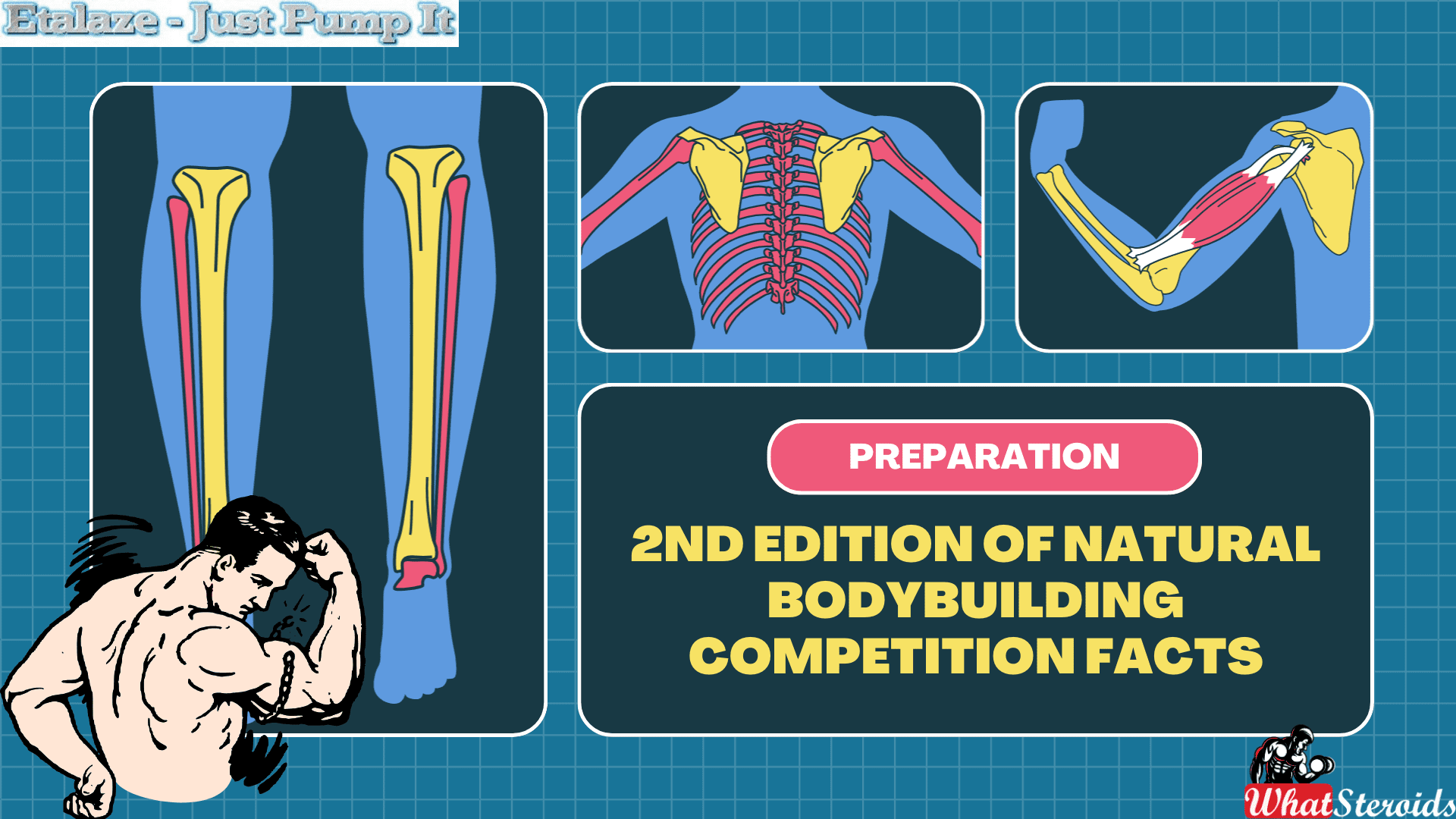
Natural bodybuilding competitions are designed to promote and celebrate athletes who build their physiques without the use of performance-enhancing drugs. These events emphasize fair play, health, and the natural development of muscle mass and definition.
The second edition of natural bodybuilding competitions has gained momentum globally, particularly focusing on drug-free athletes. These competitions are hosted by various organizations like the INBA/PNBA (International Natural Bodybuilding Association/Professional Natural Bodybuilding Association) and OCB (Organization of Competitive Bodybuilders).
In 2024, several notable events have been planned, including the INBA Natural Universe and INBA World Cup, both of which emphasize natural bodybuilding through rigorous drug testing policies. These events aim to showcase competitors who adhere to strict drug-free protocols, and winners often earn pro cards allowing them to compete in higher-level professional competitions.
These competitions focus on categories like men's bodybuilding, classic physique, and women's figure and bikini, among others. Athletes undergo polygraph and urine tests to ensure compliance with natural bodybuilding standards. The winners often receive medals, trophies, or pro status
-
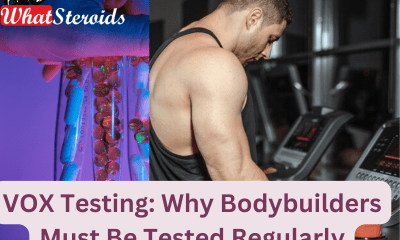
 Steroids2 years ago
Steroids2 years agoVOX Testing: Why Bodybuilders Must Have It Tested Regularly
-

 Steroids2 years ago
Steroids2 years agoShavers and Other Body Grooming Equipment for Bodybuilders In 2023
-

 Steroids2 years ago
Steroids2 years agoChatGPT and Other Avenues to Find Great Bodybuilding Coaches
-

 Steroids2 years ago
Steroids2 years agoBest Oil Recommendations Before Competition for Subtle Shimmer
-

 Steroids2 years ago
Steroids2 years agoPowerlifting Vs Power Building: Find Out the Big Difference and When to Shift Between the Two
-

 Nutrition1 year ago
Nutrition1 year agoEverything Nutritional Food: What’s Too Much Or Too Little
-

 Bodybuilding Products12 months ago
Bodybuilding Products12 months agoTelmisartan In Bodybuilding: An Expert’s Advice
-

 Anabolic Steroids1 year ago
Anabolic Steroids1 year agoLegality of Anabolic Steroids In Latin America
-

 Beginners2 years ago
Beginners2 years agoTren Cycle for Beginners
-

 Bodybuilding1 year ago
Bodybuilding1 year agoList of FDA-Approved Peptides
-

 Bodybuilding2 years ago
Bodybuilding2 years agoCompetition Prep Cycle for Pro Bodybuilders
-

 Bodybuilding1 year ago
Bodybuilding1 year agoChia Seeds in A Bodybuilder’s Diet: An Expert’s Advice
-

 Anabolic Steroids11 months ago
Anabolic Steroids11 months agoHow Much Do You Know About B-AET? A Fat Burner You’ve Been Missing
-

 Bodybuilding7 months ago
Bodybuilding7 months agoPrimal Movements: Our Ultimate Guide for Maximum Results
-

 Steroids11 months ago
Steroids11 months agoAnadrol Cycle: Benefits, Doses, Alternatives, etc.
-

 Anabolic Steroids8 months ago
Anabolic Steroids8 months agoJoint Stiffness: How to Manage It While on AAS
-

 Steroids9 months ago
Steroids9 months agoOmnitope (Oxytocin)
-

 Product Reviews10 months ago
Product Reviews10 months agoTop Vitamins for Skin Health
-

 Bodybuilding1 year ago
Bodybuilding1 year agoHow Much Is Too Much Cardio? Understanding Heart Rate Zones
-

 Bodybuilding8 months ago
Bodybuilding8 months agoHow Effective is Bone Broth for Recovery?
-

 Steroids10 months ago
Steroids10 months agoMajor Bodybuilding Peptides Explained
-

 Steroids8 months ago
Steroids8 months agoSleeping Positions for Effective Muscle Recovery
-

 Bodybuilding9 months ago
Bodybuilding9 months agoHormone Replacement Therapy (TRT) Cycle Guide
-

 Anabolic Steroids1 year ago
Anabolic Steroids1 year agoStart The New Year Strong With These Tips
-

 Bodybuilding1 year ago
Bodybuilding1 year agoCalorie Dumping: A Bodybuilder’s Guide


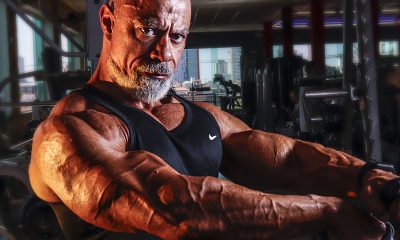

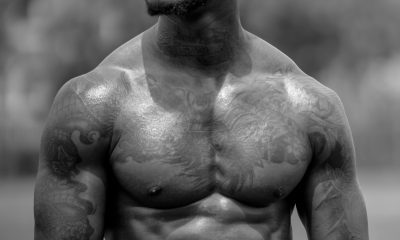

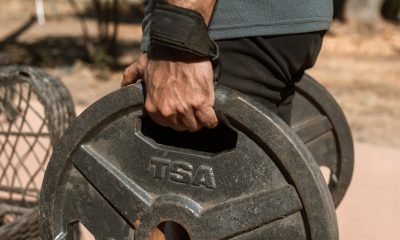




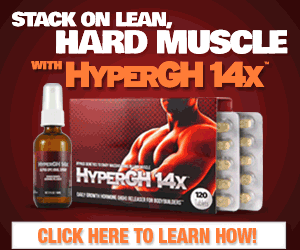
 Click here to buy 1-Test Cyp/DHB 100 by Dragon Pharma
Click here to buy 1-Test Cyp/DHB 100 by Dragon Pharma









